- Home
- slideshows
- miscellaneous
- 8 ads and products that sell America to the world, from blue jeans to Coca-Cola
8 ads and products that sell America to the world, from blue jeans to Coca-Cola
Coca-Cola tests new products in Japan. And just about everywhere else.

The first McDonald's in the Soviet Union was an event.
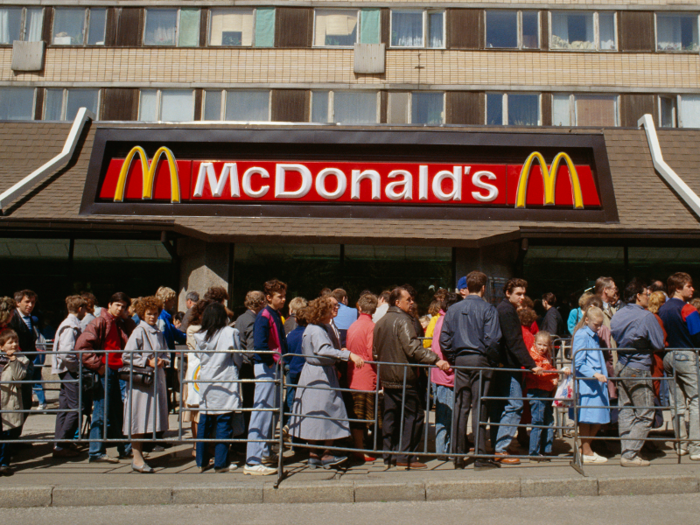
Never invade Russia in winter — unless you're McDonald's.
When the first McDonald's opened in the Soviet Union on January 31, 1990, people lined up for kilometers to try a taste of the West. It wasn't just the first McDonald's — it was the first foreign restaurant in the USSR, period. According to Russia Beyond, a "Биг Мак" (Big Mac) cost about as much as a monthly Moscow bus pass, but the 30,000 Muscovites lined up didn't care.
The American fast food giant, Russia Beyond reports, was a sign of things to come in Russia, in that capitalism would weasel its way into daily life, starting with McDonald's. Less than two years later, on December 26, 1991, the Soviet Union collapsed, much to the world's surprise.
The Moscow McDonald's still stands almost 30 years later.
Marlboro is still the world's most-smoked cigarette brand.
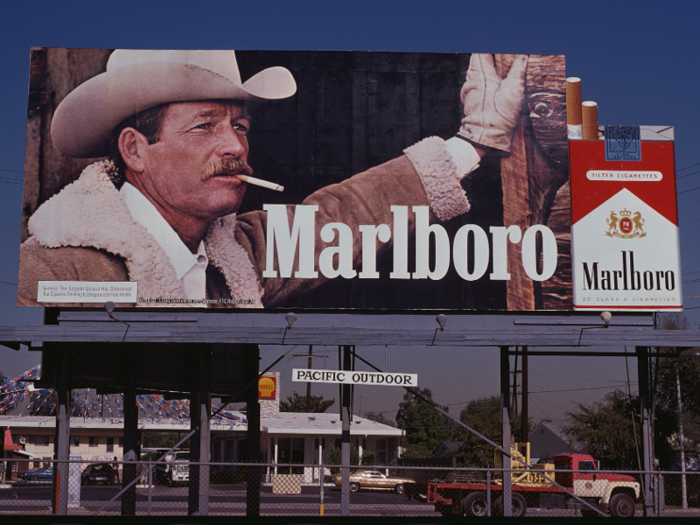
Marlboro is one of the most-smoked cigarette brand in the world.
The American company that created it, Philip Morris, currently owns 40% of the cigarette market share, according to the Centers for Disease Control and Prevention (CDC).
Marlboro's enduring success is partly because of its iconic ad campaign featuring the Marlboro Man — a rugged, dust-blown cowboy who always carried a pack of his favorite filtered cigarettes.
Before there was a Marlboro Man, the brand was marketed towards women. Its first tagline when it launched in 1924 was "Mild as May." It also featured a vaguely English name, which was in vogue for cigarette brands for decades (Pall Mall, launched 1899; Winston, launched 1954; Newport, launched 1957).
The 1950s, however, saw a new era in smoking when doctors finally caught on to the fact that cigarettes might actually be bad for you. Marlboro repositioned itself from a woman-friendly cigarette to a rough-and-tumble man's cigarette, and it was a huge success.
There have been a handful of Marlboro Men in the brand's ad campaigns over the years. Four have died from smoking-related illnesses, which has not been great for Marlboro's image. The most recognizable of them all, Darrell Winfield, passed away in 2015 in Wyoming.
Classic American cars are now a cultural symbol of Cuba.
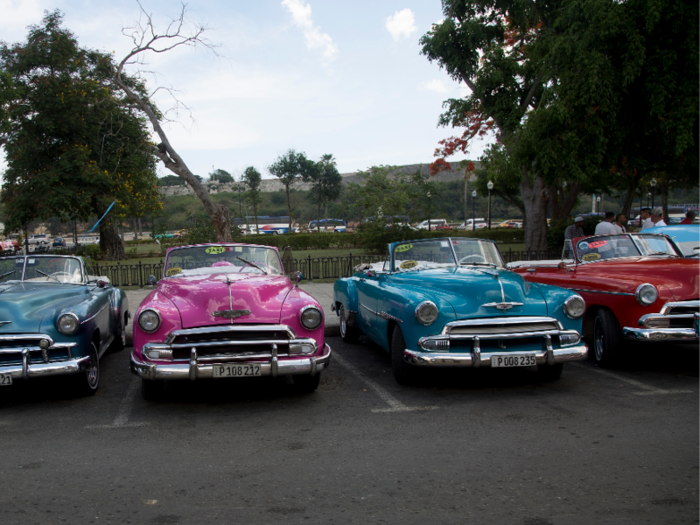
American cars are not as sought-after as they used to be. Of the top 25 global best-selling carmakers of 2018, only four American brands make the list: Ford (no. 3), Chevrolet (no. 7), Jeep (no. 15) and Buick (no. 19), according to automotive business intelligence firm JATO.
But the golden age of American cars was arguably from 1946 to 1973, according to designers from that era. This was before foreign cars outperformed and outsold American brands. Those Detroit-made cars, from brands like Pontiac, Buick, Oldsmobile, and, of course, Ford, Chevrolet, and Cadillac, were brought over to Cuba in the 1950s, when the island nation was the hippest vacation spot for wealthy Americans.
Ever since Fidel Castro's communist revolution in 1959, however, Cuba has been relatively cut off from America, cars included. (As mentioned earlier, they don't even sell Coke there). Locals have used elbow grease and ingenuity to keep those chrome-plated cars running for the last 60 years.
And with increasing American tourism to the country, taxi rides in classic cars have proven lucrative, at $30 an hour — about as much as a Cuban doctor's monthly pay, according to a report by CNN. To charge that much, they've made sure their roadsters live up to the name "un carro clásico."
Apple's marketing is as sleek and simple as its products.
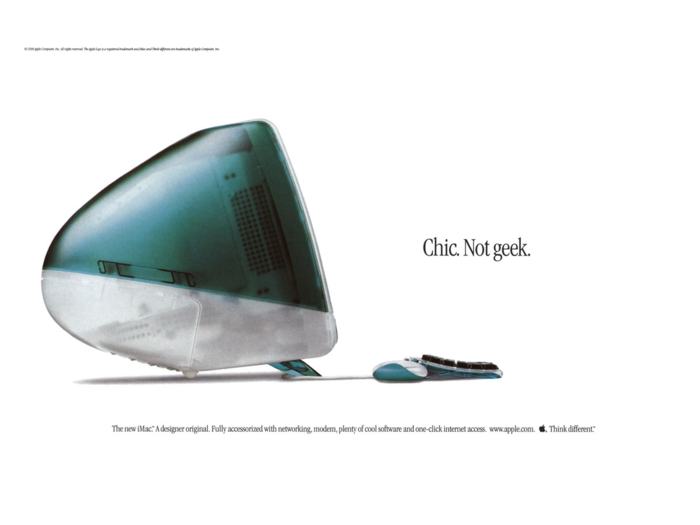
There's a reason we compare Apple products to "everything else," whether it's iPhones against Android phones or Macs against PCs. The products themselves are different, and so is Apple's marketing strategy.
According to the Forbes list of most valuable brands, Apple has stayed at no. 1 for the last nine years, with a total brand value in 2019 of $205.5 billion.
According to the Korea Herald, Apple earned almost 80% of worldwide smartphone profits in 2016, even though it had just under 20% of the market share.
In its most lucrative quarter, Q1 in 2018, Apple made just over $35 billion in North and South America, compared with nearly $18 billion in China alone, according to statistics site Statista.
To get those Apple products, users can visit one of 506 Apple Stores, 272 of which are located in 23 foreign countries.
How does Apple do it? Chirag Kulkarni, CMO of healthcare company Medly, says Apple keeps it simple. Apple is known for its minimalist ads — remember the dancing silhouettes holding white iPods?
"Apple's marketing has become a benchmark for other companies that want to reach similar heights of recognition and revenue," Kulkarni wrote in Entrepreneur.
Hollywood makes most of its money overseas.

Hollywood has always made the biggest and the best movies in the world, at least according to ticket sales. According to Box Office Mojo, the 65 highest-grossing films of all time are either American or British.
And for most of those films, domestic sales are dwarfed by global sales. Take James Cameron's 2009 alien epic "Avatar." Only 27.3% of its revenue came from the US. The other 72.7% ($2.3 billion) came from viewers all over the world. It made $204 million in China alone.
In total, Hollywood made $43 billion in 2018 alone, according to Deadline Hollywood, and its profits continue to grow, albeit sluggishly. That kind of global attention makes Hollywood one of America's biggest cultural and economic exports.
Some of the best-selling music comes from America.
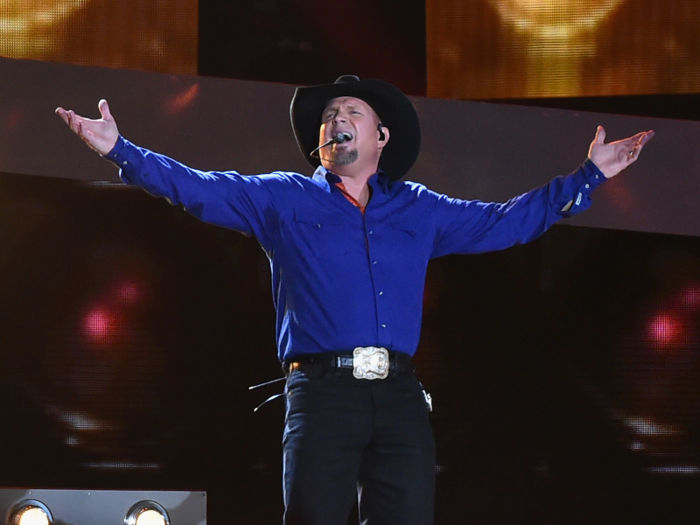
Anyone who asked the Beatles or the Rolling Stones in the 1960s where they got their sound from inevitably got the same answer: American rhythm and blues, jazz, and country.
The British invasion brought a new spin on Rock and Roll from across the Atlantic, but bands repeatedly reminded fans that their music was American.
To this day, the 10 best-selling artists of all time are either American or British, both with five spots on the list. The best-selling British act? The Beatles (no. 1, 183 million units). And what about the Americans? Garth Brooks (no. 2, 148 million units).
Among the best-selling records of all time are "Thriller" by Michael Jackson (no. 1), "Hotel California" by the Eagles (no. 3), and "Come on Over" by Shania Twain (no. 4) — and they're all American. Granted, most units sold were bought by Americans, but they're still staggering numbers.
Jeans are everywhere.

When most people compare something to "apple pie" or "baseball" they recognize the implicit shorthand: that thing, whatever it may be, is quintessentially American. The same goes for blue jeans.
Try walking down the street, next time you're abroad, and count how many people are wearing jeans. That's what anthropologist Danny Miller did for his book "Blue Jeans." Whether it was India, Brazil, or Turkey, around half of the first 100 people he saw were wearing jeans, the BBC reports.
What started out as a durable pair of pants for farmers in the American West came to be a timeless fashion staple. The first pair of jeans, contrary to popular belief, weren't created by Levi Strauss, but by a Nevada tailer named Jacob Davis. Davis needed capital, so he asked Strauss for help.
Jeans were already part of the romanticized notion of the West, but American movies exported that notion to the world. "Hollywood costume designers put all the bad boys in denim," Lynn Downey, a historian at Levi Strauss & Co, told the BBC.
Popular Right Now
Popular Keywords
Advertisement